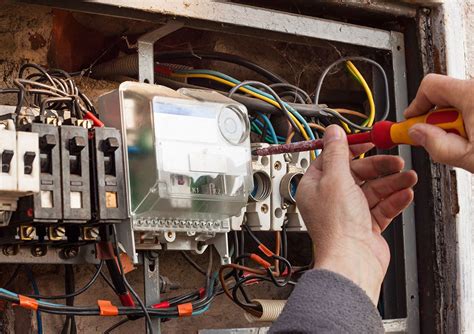Streamline efficiency with innovative mechanical system optimisation support.
Top Tips for Effective Electrical System Troubleshooting
Repairing electrical systems needs a systematic technique, grounded in an extensive understanding of electric principles and safety procedures. By acquainting oneself with circuit components, using vital tools, and sticking to an organized assessment technique, experts can effectively determine and resolve concerns. The nuances of reliable troubleshooting prolong beyond simple technical knowledge; understanding exactly how to record searchings for and prioritize safety and security can dramatically affect outcomes. As we discover these important components further, it becomes clear that understanding this process is not simply advantageous however essential for success in the area.
Understand the Fundamentals
Understanding the basics of electric systems is important for effective troubleshooting, as a strong structure allows technicians to detect and fix problems a lot more successfully. An extensive grasp of electrical principles, such as voltage, present, resistance, and power, is important in determining the origin of problems. Voltage is the electric possible difference that drives present through a circuit, while resistance opposes the circulation of present, impacting the general performance of the system.
Familiarity with circuit parts, including resistors, capacitors, diodes, and switches over, is likewise paramount. Each element plays an unique role in circuit behavior and can influence efficiency when malfunctioning. Furthermore, comprehending collection and parallel circuit setups is crucial, as these plans influence the circulation of voltage and present within the system.
Moreover, knowledge of safety and security procedures is vital. Technicians should recognize potential risks, such as shock and brief circuits, to execute secure troubleshooting techniques. By understanding these fundamental principles, technicians improve their capacity to carry out reliable diagnostics and fixings, inevitably bring about improved performance and reliability of electrical systems. This fundamental knowledge is the keystone of effective troubleshooting endeavors.
Gather Necessary Tools
Efficient troubleshooting of electric systems requires the ideal collection of tools to diagnose and deal with issues precisely. Essential tools include a multimeter, which measures voltage, current, and resistance, enabling for specific examinations of electric parts.
In addition, insulated hand tools such as screwdrivers, pliers, and cord pole dancers are important for safely manipulating electric connections. It is likewise a good idea to have a circuit tester accessible to confirm the visibility of voltage in electrical outlets and cords. For more complicated systems, a thermal imaging electronic camera can assist detect overheating elements, showing potential failings.

Follow a Methodical Approach
Having actually collected the appropriate tools, the following action in repairing electrical systems is to comply with an organized approach. A methodical technique ensures that professionals can determine mistakes successfully and precisely, reducing downtime and avoiding unneeded repair services.
Begin by evaluating the system's schematic diagrams and specs. Comprehending the style and operational criteria will certainly provide context for identifying issues. Next, separate the trouble location by using a process of removal. This involves checking each element systematically, Check This Out starting from the source of power and functioning towards the lots.
Use screening tools, such as multimeters straight from the source and oscilloscopes, to collect unbiased data concerning voltage, current, and resistance at different factors within the system. This empirical evidence will certainly assist your troubleshooting initiatives and assist to verify or get rid of prospective sources of failing.
Additionally, take into consideration ecological factors that might affect the system's performance, such as temperature level fluctuations or wetness ingress. A detailed evaluation of circuitry, links, and parts will certainly ensure that all possibilities are accounted for.
Record Your Findings
Complete paperwork is vital in the troubleshooting procedure of electric systems. Precise records enhance the effectiveness of determining reoccuring issues and help with communication among team participants. Each searching for ought to be thoroughly kept in mind, including symptoms observed, examinations conducted, and the end results of those tests. electrical system troubleshooting. This method not only aids in comprehending the source of the problem however additionally works as a referral for future fixing initiatives.

Furthermore, keeping a log of parts replaced or repairs executed is important. This information sustains inventory administration and can aid analyze the longevity and reliability of certain components.
Ultimately, the paperwork process ought to be detailed yet concise, why not try this out enabling very easy access and evaluation - electrical system troubleshooting. By prioritizing comprehensive documents, professionals can create an important expertise base that not only aids in existing troubleshooting but additionally encourages future maintenance efforts, consequently enhancing total system integrity

Prioritize Safety And Security Actions
Acknowledging the intrinsic risks connected with electric systems is important for guaranteeing safety during troubleshooting. Electrical shock, burns, and tools damages are just a few of the potential dangers that specialists encounter. Prioritizing safety procedures is not only a lawful responsibility yet additionally an ethical essential that safeguards both the professional and the surrounding setting.
Before beginning any type of troubleshooting task, specialists ought to don suitable individual protective tools (PPE), consisting of insulated handwear covers, safety glasses, and flame-resistant clothing. Guaranteeing that the workspace is completely dry and without mess can substantially decrease the risk of mishaps. Furthermore, it is important to de-energize circuits prior to starting any type of work, verifying that they are not live through the usage of a multimeter or voltage tester.
Developing clear communication methods with group members is likewise crucial; this makes certain that every person is aware of potential dangers and the condition of the electric system being dealt with. Having an emergency situation response plan in location can verify important in the event of a case. By focusing on safety and security measures, service technicians can efficiently minimize risks and promote a more secure work environment.
Conclusion
Effective electric system fixing relies on a thorough understanding of basic principles and a methodical approach. Focusing on safety and security actions ensures the well-being of individuals entailed and the stability of the electric system.